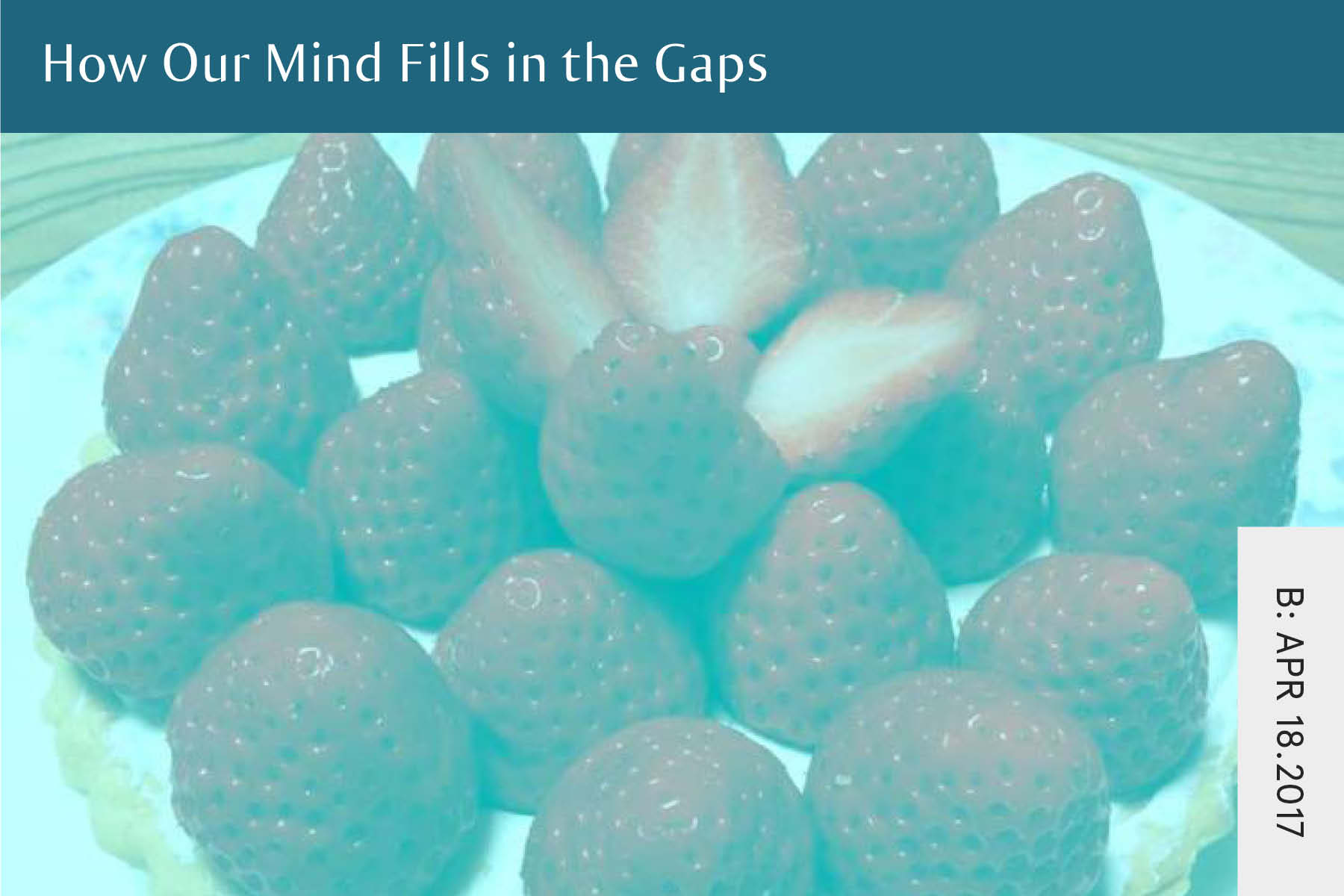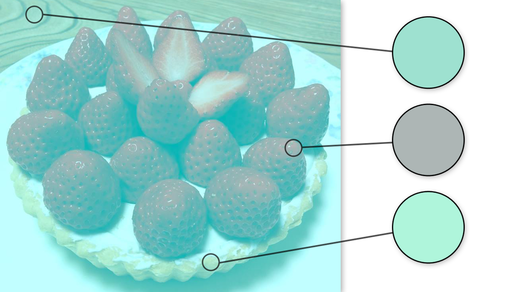

When you look at it, what do you see? Hopefully you see a load of strawberries on top of a pastry of sorts that is sitting on a table.
Now if I were to ask you the colour of the strawberries in the picture, what’s your response? My bet is that you’d say red. It seems obvious because they sure look red.
Well it turns out that this is an optical illusion. There are no red pixels in the image above.
The photo was created by Akiyoshi Kitaoka, a Professor of Psychology at Ritsumeikan University in Japan, who specialises in creating optical illusions.
So why do we see red? It’s called colour constancy and it’s your brain’s way of colour correcting the world when it’s filtered through different light.
Your brain is trying to create consistency and it does this on a daily basis without you even noticing. It would be confusing to look at a banana and it be yellow in the bright morning sun but green in the lower light in the afternoon. So our brains evolved to correct for this, and despite varying level of light, the colour of fruit (and everything else) stays the same.
Back in December of 2015 I released a podcast called Understanding Your Beliefs. It looked at how our beliefs are formed.
Every moment of every day we are exposed to an inordinate amount of information and stimuli. We can’t possibly process all of this, so at an unconscious level our brains start to prioritise what is and isn’t worth showing us. It’s trying to filter and expose you to only the important stuff.
As part of this, it makes sense to our brain to make assumptions or connections. These are shortcut ways for us to understand the world and not be overwhelmed by information. Basically, beliefs help us to quickly and easily make sense of the world that we live in.
And if we think about it from an evolutionary perspective, it helps to explain this even more.
Imagine you are an early human living in nature. You’re walking around the forest and hear a rustle in the bushes. From a life or death perspective, it makes sense for us to make the connection that a rustle in the bushes equals a dangerous predator. To make the connection that A = B.
Because if we are right, we manage to get away and if we are wrong, then we still avoid potential harm.
Making the assumption that the rustle in the bushes is a dangerous predator when it turns out to be just the wind or something harmless, is known as a false positive. You incorrectly assumed that there was a connection there when there wasn’t.
But let’s look at it the other way around. You hear a rustle in the bushes, you assume that it is nothing, and a predator jumps out and attacks you. This is known as a false negative. You assumed that there was no connection between the two events when there really was.
As a species it makes more sense from an evolutionary perspective to create false positives then false negatives; that is, to find patterns that do exist even when it isn’t true.
This is known as patternicity and it’s the tendency to find meaningful patterns in both meaningful and meaningless data.
So much of the work that I do with people is looking at the assumptions and conclusions that they’ve come to and asking them, “is this really true?” It’s amazing how much we take for granted as absolutely correct that turns out to just be our own biases, or a bug (as opposed to a feature) in how the human mind works.
There’s no doubt our brains are trying to help us out by autocorrecting our visual perception or making shorthand connections that become our beliefs.
It can lead to incorrect assumptions or us following patterns of behaviour that are destructive, despite their positive intentions.
So be curious and open, but also sceptical, about your own (and other’s) beliefs. Challenge your world views on a regular basis and see if they continue to stack up.

p.s. This is the image of the strawberries again where someone has looked at the actual colours of pixels. If you still don’t believe it (I didn’t) you can do this yourself and see the results.
I’m a leading expert and advocate for full recovery. I’ve been working with clients for over 15 years and understand what needs to happen to recover.
I truly believe that you can reach a place where the eating disorder is a thing of the past and I want to help you get there. If you want to fully recover and drastically increase the quality of your life, I’d love to help.
Want to get a FREE online course created specifically for those wanting full recovery? Discover the first 5 steps to take in your eating disorder recovery. This course shows you how to take action and the exact step-by-step process. To get instant access, click the button below.
Discover the First 5 Steps To Take In Your Eating Disorder Recovery
Get started the right way and be on the path to full recovery and the freedom it will bring YOU.
Unlike other approaches focusing on just one aspect of recovery, this course shares a framework that demonstrates what full recovery is really about and gives you the tools to get there.
Get Instant Access!
Share
Facebook
Twitter